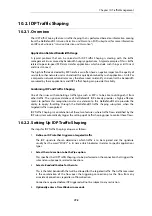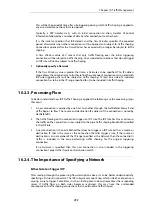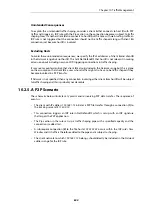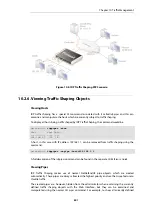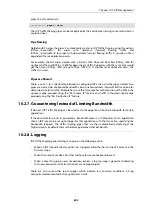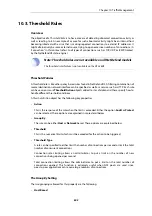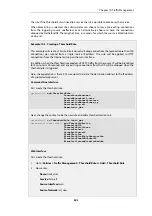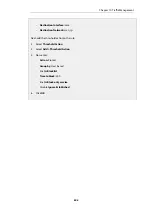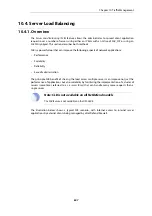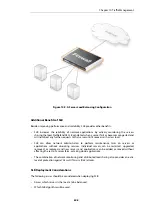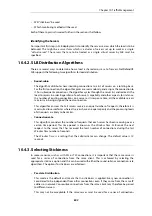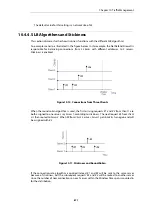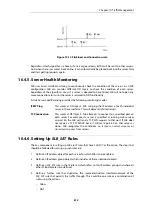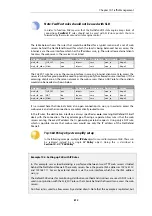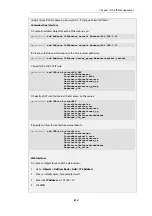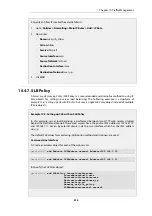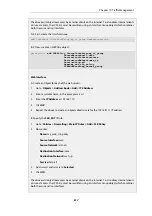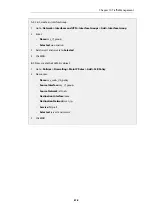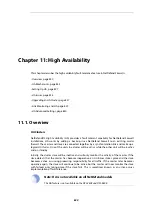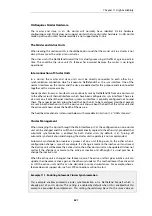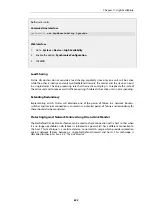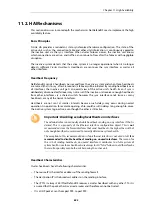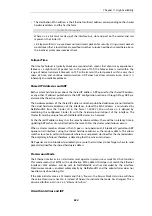
The default value for this setting is a network size of
24
.
10.4.4. SLB Algorithms and Stickiness
This section discusses further how stickiness functions with the different SLB algorithms.
An example scenario is illustrated in the figure below. In this example, the NetDefend Firewall is
responsible for balancing connections from 3 clients with different addresses to 2 servers.
Stickiness is enabled.
Figure 10.10. Connections from Three Clients
When the round-robin algorithm is used, the first arriving requests
R1
and
R2
from
Client 1
are
both assigned to one server, say
Server 1
, according to stickiness. The next request
R3
from
Client
2
is then routed to
Server 2
. When
R4
from
Client 3
arrives,
Server 1
gets back its turn again and will
be assigned with
R4
.
Figure 10.11. Stickiness and Round-Robin
If the connection-rate algorithm is applied instead,
R1
and
R2
will be sent to the same server
because of stickiness, but the subsequent requests
R3
and
R4
will be routed to another server
since the number of new connections on each server within the Window Time span is counted in
for the distribution.
Chapter 10: Traffic Management
811
Summary of Contents for NetDefendOS
Page 30: ...Figure 1 3 Packet Flow Schematic Part III Chapter 1 NetDefendOS Overview 30 ...
Page 32: ...Chapter 1 NetDefendOS Overview 32 ...
Page 144: ...Chapter 2 Management and Maintenance 144 ...
Page 284: ...Chapter 3 Fundamentals 284 ...
Page 392: ...Chapter 4 Routing 392 ...
Page 419: ... Host 2001 DB8 1 MAC 00 90 12 13 14 15 5 Click OK Chapter 5 DHCP Services 419 ...
Page 420: ...Chapter 5 DHCP Services 420 ...
Page 573: ...Chapter 6 Security Mechanisms 573 ...
Page 607: ...Chapter 7 Address Translation 607 ...
Page 666: ...Chapter 8 User Authentication 666 ...
Page 775: ...Chapter 9 VPN 775 ...
Page 819: ...Chapter 10 Traffic Management 819 ...
Page 842: ...Chapter 11 High Availability 842 ...
Page 866: ...Default Enabled Chapter 13 Advanced Settings 866 ...
Page 879: ...Chapter 13 Advanced Settings 879 ...


